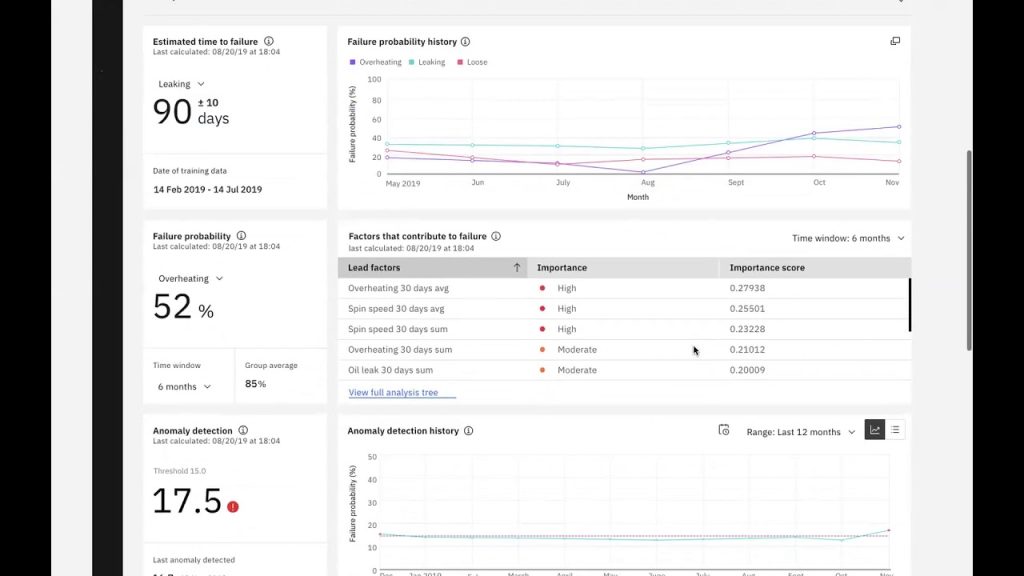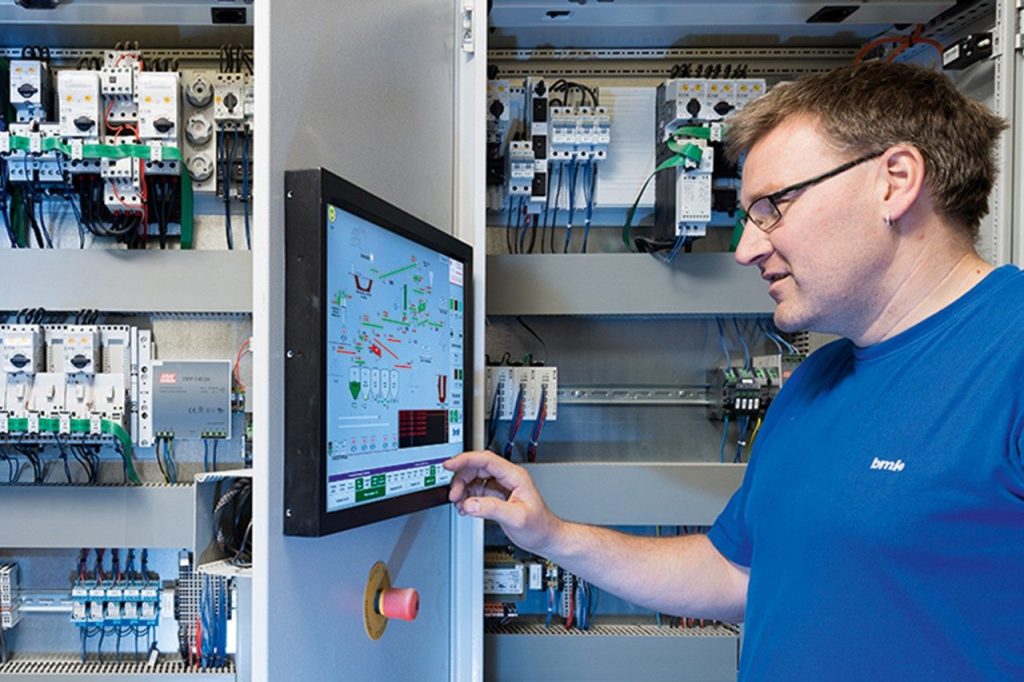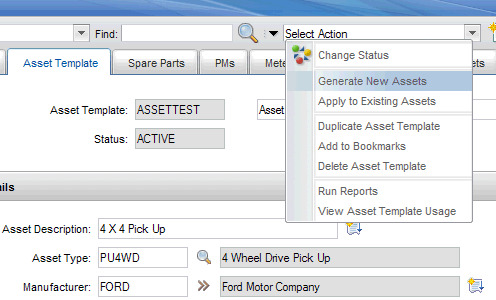5 Min Read
In today’s increasingly interconnected and data-driven world, businesses across various industries are recognizing the immense value of leveraging data to optimize their operations. One area where data analytics has revolutionized traditional practices is in the field of maintenance.

Instead of relying on reactive measures to address equipment failures and breakdowns, companies are now embracing asset data, asset sensor data, and preventive maintenance strategies to reduce asset failures and maintenance costs.
What is Predictive Maintenance?
Predictive maintenance is a proactive approach that leverages advanced technologies and data analysis to predict potential equipment failures even before they occur. It involves the use of asset sensor data, machine learning algorithms, and historical records to forecast when equipment might require maintenance or repairs.

Thus, maintenance managers predict failures by analyzing real-time data from asset sensors embedded in machines. Predictive maintenance systems can also identify patterns and anomalies that may indicate impending failures.
Predictive maintenance aims to optimize maintenance schedules, reduce downtime, maximize operational efficiency, and minimize the chances of future failures.
Maximo Predictive Maintenance Modules
IBM Maximo is a comprehensive suite of Enterprise Asset Management (EAM) solutions that offer a range of modules designed to optimize maintenance processes and increase asset reliability.
Among its other key capabilities, Maximo includes two key predictive maintenance models: IBM Maximo Predict and IBM Maximo Health.
IBM Maximo Predict
IBM Maximo Predict is a robust module that utilizes Machine Learning (ML) algorithms and historical data to forecast equipment failures, enabling proactive asset management and maintenance planning.

Maximo Predict can also assess the impact of potential equipment failures on overall operations, providing a risk rating or criticality score for each asset. This allows maintenance managers to take prescriptive actions such as parts replacement, lubrication tasks, or adjustments to operational parameters.
IBM Maximo Health
IBM Maximo Health is a module designed to monitor asset conditions in real-time and provide insights into their health and performance. IBM Maximo Health continuously monitors parameters such as temperature, pressure, vibration, and fluid levels, providing a comprehensive view of asset health.
It also identifies anomalies from normal operating conditions and triggers maintenance activities based on condition-based rules. With Maximo Health actions, flexible health scores can be obtained for different assets & equipment.
Benefits and Impact of Maximo Predictive Maintenance
By proactively identifying potential equipment failures and optimizing maintenance strategies, Maximo Predictive Maintenance delivers numerous benefits that enhance operational efficiency, reduce costs, and improve overall asset reliability. Below listed are the key advantages and impacts of implementing Maximo Predictive Maintenance.
Reduction in Unplanned Downtime and Associated Costs
Maximo Predictive Maintenance significantly mitigates the risk of unexpected equipment failures, which can cause costly downtime and disrupt operations. By analyzing historical data and patterns, the module identifies potential failure events, allowing maintenance teams to intervene proactively.

This approach minimizes unplanned downtime, increases asset availability, and reduces the financial impact of disruptions. Such predictive maintenance insights help maintenance managers make informed decisions on replacement planning and asset management.
Increased Asset Lifespan Through Proactive Maintenance Interventions
Reactive maintenance strategies often lead to excessive wear and tear of assets, shortening asset life. By scheduling preventive maintenance based on accurate predictions, organizations can address emerging issues before they escalate, ultimately prolonging the lifespan of assets. This not only reduces replacement costs but also optimizes capital expenditure by maximizing asset utilization and the duration of asset availability.
Improved Safety and Operational Efficiency
Unplanned equipment failures can pose several safety risks and compromise the operational efficiency of businesses. Maximo Predictive Maintenance helps mitigate these risks by identifying potential hazards in advance. By preventing unexpected downtime, the chances of operational risk and efficiency are improved, ensuring minimized disruptions or delays in asset operations. This enables managers to focus on other important tasks and not stress over maintaining assets frequently.
Optimized Maintenance Schedules and Resource Allocation
Maximo Predictive Maintenance optimizes scheduled maintenance by eliminating unnecessary preventive maintenance tasks and streamlining maintenance efforts based on accurate predictions.
Instead of following rigid time-based maintenance routines, organizations can focus on assets that truly require attention, reducing the number of unnecessary inspections or replacements.
Enhanced Decision-Making Through Data-Driven Insights
Predictive maintenance insights can drive informed, powerful decision-making. Organizations can gain valuable data-driven analytics into asset performance, maintenance patterns, and operational efficiency, which helps managers streamline asset management.
These insights enable the execution of powerful maintenance strategies, asset lifecycle planning, and optimization of maintenance processes. Organizations can also align maintenance activities with business objectives.
Implementing Maximo Predictive Maintenance
Maximo Predictive Maintenance enables organizations to effectively identify and address maintenance needs before they result in costly failures.
Following is the step-by-step guide for successfully implementing Maximo Predictive Maintenance:
Assessing Readiness and Identifying Assets
Before diving into the implementation process, it is essential for businesses to assess readiness for Maximo Predictive Maintenance. This involves evaluating the maintenance practices of existing assets, identifying critical assets, and determining the goals and objectives of implementing predictive maintenance.

By understanding the current state and desired outcomes, organizations can lay a solid foundation for successful implementation.
Asset Data Collection and Integration Setup
Next, businesses should gather and integrate asset data from asset sensors, IoT devices, historical maintenance records, and other relevant systems to implement preventive maintenance and minimize asset failures. Asset records provide accurate insights into asset performance, which enables managers for taking critical measures to manage assets and reduce asset failures.

The integration setup involves establishing connections between Maximo Predictive Maintenance and data sources in order to ensure a seamless flow of information. Managers should prioritize the quality of sensor data and security measures to ensure data accuracy and privacy.
Configuring Machine Learning Models
It is vital to configure Maximo Predictive models as they rely on advanced machine learning algorithms to analyze asset data and identify patterns indicative of potential failures.
During this phase, organizations are to configure and train custom models (ML) using historical data to recognize failure patterns specific to their assets.
This process involves selecting appropriate algorithms, fine-tuning parameters, and validating the models’ performance to ensure accurate predictions.
Establishing Proactive Maintenance Strategies
With ML models in place, organizations should shift from reactive to proactive maintenance approaches. Proactive strategies involve leveraging predictive insights to schedule maintenance activities based on the predicted asset health.

It is crucial to align preventive maintenance strategies with business objectives and operational constraints for enabling scheduled maintenance and managing assets effectively.
Defining KPIs for Tracking and Evaluation
Finally, managers can measure the effectiveness of the Maximo application suite by defining relevant Key Performance Indicators (KPIs). KPIs help monitor the performance of assets, evaluate the accuracy of predictions, measure maintenance efficiency, and quantify cost savings.
Examples of KPIs include asset status (uptime), mean time between failures, maintenance costs, and return on investment. By regularly monitoring these metrics, organizations can identify areas for improvement, optimize maintenance strategies, and ensure continuous refinement of their predictive maintenance program.
Final Words
Maximo predictive maintenance offers a transformative approach to maintenance management by harnessing the power of data and advanced analytics. By leveraging the capabilities of the Maximo application suite, organizations can shift from reactive to proactive maintenance strategies, resulting in reduced downtime, optimized asset performance, and significant cost savings.
As industries continue to embrace digital transformation, implementing Maximo Application Suite becomes imperative for organizations looking to stay competitive in today’s dynamic business landscape. By adopting this powerful solution, organizations can unlock the full potential of their data and embark on a journey towards proactive maintenance, improving asset reliability, avoiding future failures, and driving sustainable success through predictive maintenance solutions.
Get in touch with Banetti to seamlessly deploy the IBM Maximo application suite for your business Predictive Maintenance needs.